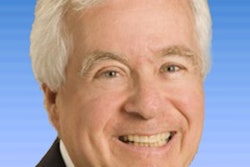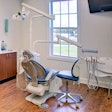
When thoughts arrive to sell your dental practice, it is time to start putting the house in order so the best terms and conditions for the sale are available to the seller.
Any practice broker will let the dentist know that the sooner things are addressed, the better it is for marketing the office. Many dentists want to continue their growth and have plenty of years left prior to their readiness to place their practices on the market. The fastest way for them to expand is not through internal growth by acquiring new patients every month but rather by acquiring a fully operational, profitable practice. This type of acquisition adds many patients immediately, plus it adds to the profit.
When acquiring an existing successful dental practice, especially one that is near the base practice, many economies of scale can immediately be put into place. One example is the number of front desk staff needed at the combined practice. It is a definite area to cut back some of the staff since the patients will arrive at the new combined office.
The office manager role should be limited to one person and the administrative staff reduced since the use of computers and state-of-the-art software will assist the administrators. Assuming the seller remains for a while and continues to work, there is no need to immediately market the practice to hire an additional dentist.
The time and work ethic needed to showcase the transition
The longer the dentist shows a good growth pattern with gross revenue, the better it is for the potential buyer of the practice. Lenders enjoy lending when they see smaller risks associated with their loans.
As a dental practice shows higher gross earnings and operating profits from year to year, the loan officers feel more comfortable with a higher loan approval amount. When gross revenues are stagnant, there should be a reasonable explanation to present to the conventional lender so that credibility is established between the dentist and the loan officer.
If the dentist has recently started to get his or her practice ready for the transition, a projection should be prepared with the gross revenue projections exceeding the past performance. There should be a fully footnoted report accompanying the projection in which the dentist defines what steps he or she will take to achieve the gross revenue streams listed in the projection.
What are some realistic footnotes that the financial projection should address?
Will an additional dentist be hired along with hygiene and dental assistant resources? A poor service reputation will immediately push the potential new patients out the door.
Since a new and substantial marketing budget will be adopted as a significant part of the new dental practice expansion model, the expectation of an influx of new patients will be expected.
Spending a small amount to "spruce up" the office can add a new look to the practice and impress the patients. Being modest over the projected months when the gross revenue and profits will appear is a safe way to show the lender that the dentist is being reasonable in his or her approach as to when the funds will be available to pay back the bank while building a little profit for the dentist.
Understanding the process
The transitioning dentist may feel that it is too aggravating to follow the steps in a new business model where acquisition may be too fast or they may not completely understand it.
It may be that the dentist feels as if what he or she learned by trying to find a buyer becomes more acceptable if he or she becomes the seller. Where will the dentist look to find someone either under a traditional model of sale utilizing a dental practice broker to market the practice or offering his or her practice to a dental service organization (DSO)?
Either way, the stress will suddenly lessen tremendously for this dentist. Marketing to a DSO will give the dentist a feeling of finding a pot of gold when the sale has been completed. If the incentives are met that have been agreed upon by the dentist, broker, and the DSO, the dentist will have achieved what he or she could never have earned under the traditional model.
The typical traditional sale has a lump sum payment at closing or a lump sum payment and a much smaller amount paid later based on certain performance models. The typical purchase by a DSO has a lump sum payment plus many incentives based on financial performance and is paid when those goals have been achieved.
The dentist should carefully follow the advice of his or her advisers when dealing with the DSO since this is such a new concept in dentistry. It will give the dentist a sense of less stress and reasonable compensation. The dentist will not have to worry about or even undertake any administrative duties but is only responsible for clinical matters.
The clinical side of dentistry is what dentists almost always have striven for throughout their careers, since this is where the stress is the least for them and what they have been educated to do. Dentists are not trained in business approaches to solving financial problems. Now, there is a strong possibility to achieve this point in his or her career if the DSO has the proper capitalization and working capital. It also needs secure, long-term financing and excellent administrators if the DSO grows and adds more dental practices and dentists. These administrators will keep the DSO running smoothly and will allow the dentists to do what they do best, which is to practice dentistry and not worry about administrative matters.
Bruce Bryen is a certified public accountant with over 45 years of experience. He specializes in providing litigation support services to dentists, with valuation and expert witness testimony in matrimonial and partnership dispute cases. Bryen assists dentists with financial decisions about their practice, practice sales, evaluating whether to join a dental service organization, practice evaluation during divorce proceedings, and questions about the future or financial health of dental practices. He can be reached at [email protected].
The comments and observations expressed herein do not necessarily reflect the opinions of DrBicuspid.com, nor should they be construed as an endorsement or admonishment of any particular idea, vendor, or organization.



















